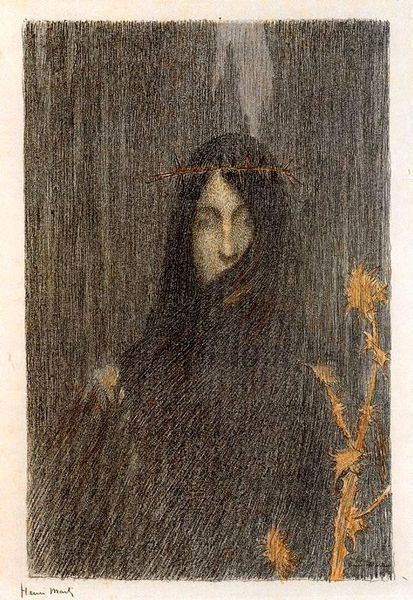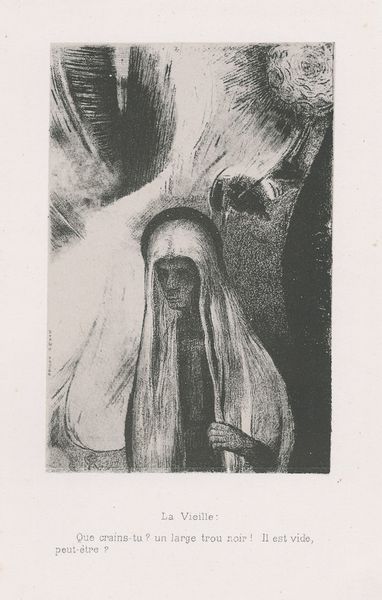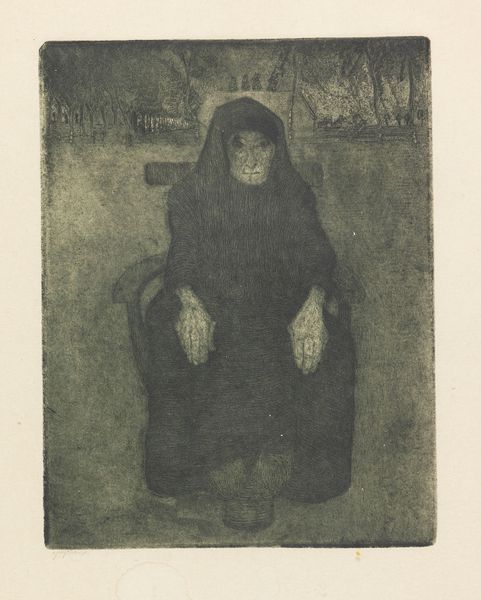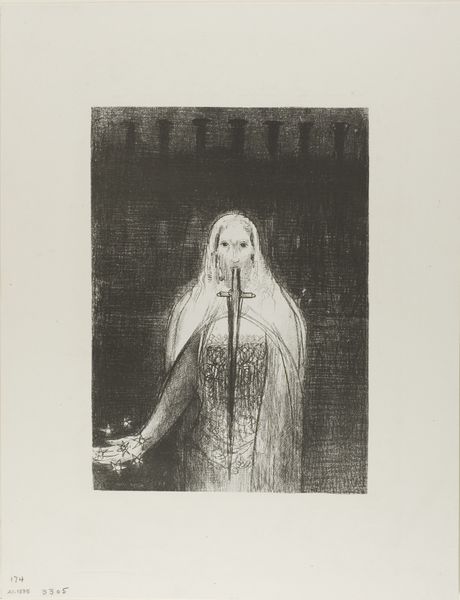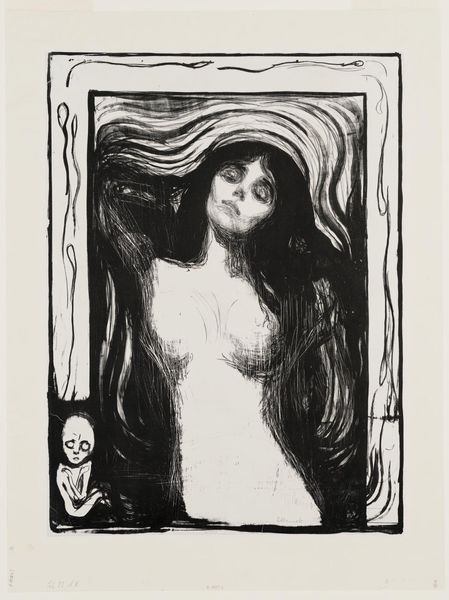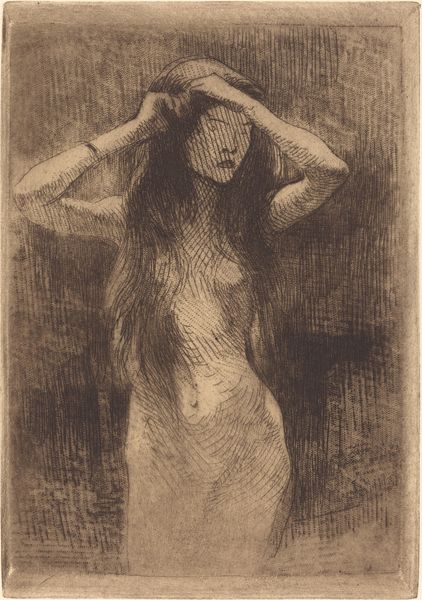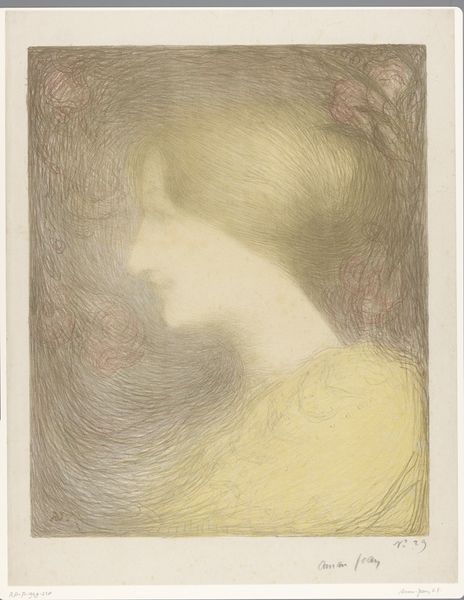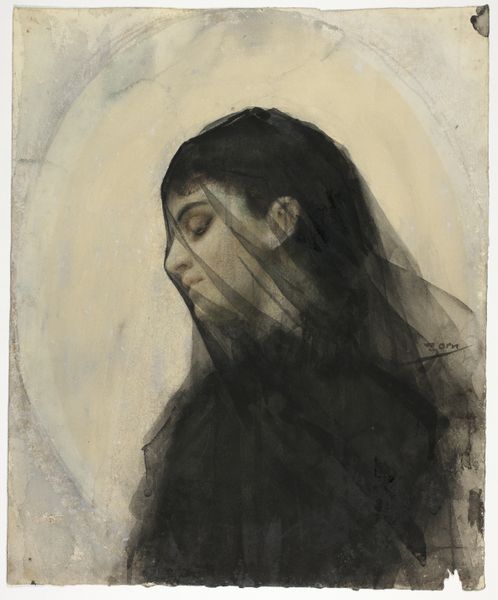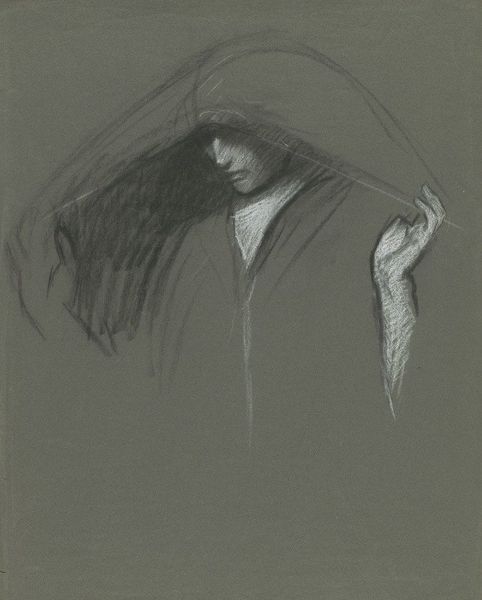
drawing, print, paper, charcoal, pastel
#
portrait
#
drawing
# print
#
charcoal drawing
#
figuration
#
paper
#
oil painting
#
pastel chalk drawing
#
symbolism
#
charcoal
#
pastel
Dimensions: 492 × 325 mm (image); 570 × 430 mm (sheet)
Copyright: Public Domain
Editor: We're looking at "Silence," a piece by Henri Martin, created between 1894 and 1897. It’s a charcoal and pastel drawing on paper, and the mood feels incredibly somber, almost like a religious icon, with that crown of thorns. How do you interpret this work? Curator: Immediately, I'm drawn to the representation of silence itself. Is it forced? Is it chosen? In late 19th-century France, especially within Symbolist circles, silence often became a coded way to depict societal constraints on women, particularly concerning their voices and their bodies. The crown of thorns—is it a symbol of suffering, but also of imposed virtue? Consider the composition: a single female figure dominates the space, but she's also confined by it. What’s she not being allowed to say? Editor: I hadn’t thought about it that way. The thorns suggested a more personal suffering, a kind of… internal pain. Curator: And it might be. But who benefits from her silence? The power structures of the time played a huge role in shaping women’s experiences and artistic representations. How does her silence serve the patriarchal norms? Think about the Pre-Raphaelites and their tragic Ophelias—were those portrayals also about control, about a cultural fascination with female fragility? Martin offers a muted color palette that amplifies the heavy quiet of her. It's not just quiet—it's silenced. Editor: So, you're seeing a critique of societal expectations placed on women within the piece? That maybe her quietude is imposed rather than intrinsic? Curator: Precisely. It urges us to question the historical context and political implications of representations like this, moving beyond a simple portrait to consider the complex ways power and gender intersect in art. Editor: That shifts my understanding completely. I'm seeing layers of meaning I hadn't noticed before. It’s like her silence is a scream in itself. Curator: Exactly. And that scream, once heard, allows us to understand the quiet resistance simmering beneath the surface of many historical artworks.
Comments
No comments
Be the first to comment and join the conversation on the ultimate creative platform.
